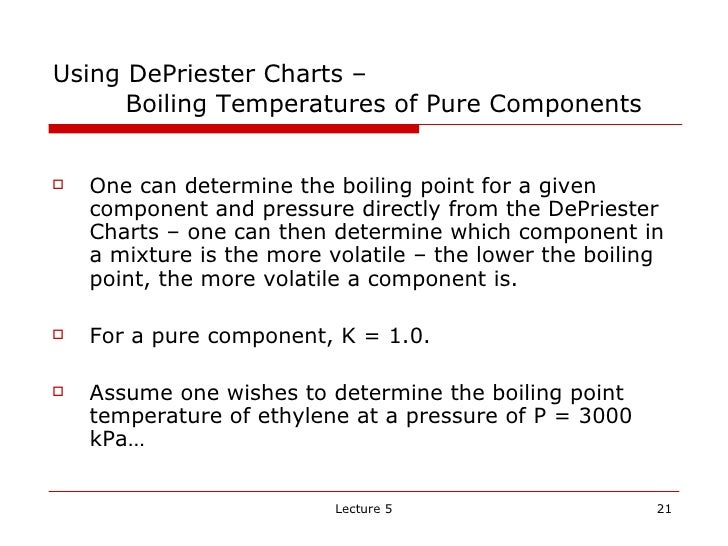

Note that the partial pressure of component i in the vapor is used rather than the mole fraction, which implies that we are assuming an ideal gas. Xi 1 Ki 2 xi For liquid-vapor equilibrium it is called a vapor-liquid equilibrium ratio: Lįor liquid-liquid equilibrium it is often called a distribution coefficient: That is, the K-value for the component of interest is substantially different from one.Ī K-value is the ratio of the amount of component i in one phase to another. This type of separation is possible because there is an equilibrium ratio different from one. Note that the liquid could be collected, and heated to the dew point line to create a liquid even more concentrated in the non-volatile species. Note that this is not really a practical process because _? If we start with a liquid of the same composition, but heat above the bubble point as shown we can perform a separation however the resulting products are less pure. XB XBV fL L X B X BV XBL X B fV L XB X VB This vapor could be collected, and cooled to the bubble point line to create a liquid concentrated in the volatile species. Note that if we start with a liquid of composition XB(L) and T heat to the bubble point we start to form a vapor with composition XB(V), which is rich in the volatile component. Txy Pconst Diagram Maximumtemperature azeotrope WHAT ARE THE DIFFERENCES AND SIMILARITIES ? ◦ If P further superheated vapour reqion. Combination of dew points dew line (or saturated vapour line). ◦ As P, more liquid will be evaporated until W dew point = the last drop of liquid disappear. ◦ The vapour V and the liquid L are in the equilibrium – both are connected through a tie line of VL. If all bubble points combined bubble line (or saturated liquid line). Starting with liquid point F, and moving vertically downwards along FG whereby P const T and composition: ◦ The first bubble appears L bubble point. Phase regions: ◦ Top region Subcooled / compressed liquid ◦ Bottom region Superheated vapour ◦ Intermediate region combination of liquid and vapour phase region or ?. Qualitative Behaviour of VLE PTxy of a binary system (= system with 2 components) shows VLE in a 3-D form. ◦ Gibbs energy for each phase is similar. Phase composition: ◦ Liquid composition xi ◦ Vapour composition yi Requirement for equilibrium: ◦ Both phases – L and V the same T and P. VLE problem determination of T, P or composition (xi or yi). Vapour Liqud Equilibrium (VLE) VLE equilibrium between liquid phase and vapour phase. Thermodynamic II VAPOUR-LIQUID EQUILIBRIUM

Dr Darman Nordin & Dr Mohd Shahbudin Masdar


 0 kommentar(er)
0 kommentar(er)
